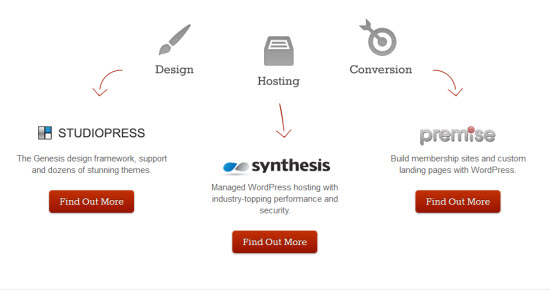Ready? Here is the sales squashing mistake most marketers and salespeople are making:
They think they sell a product or service. Wrong.
To market and sell effectively, you must figure out what motivates people to purchase. And it isn’t that they want your new shiny widget.
What customers really want
People buy outcomes.
They don’t buy products and they don’t buy services.
Let me explain.
An SEO firm might market their business by saying their customers want SEO services. Every business wants SEO services, right?
Nope. That’s not what the market wants. They want an outcome.
What they really want is more traffic. And, if you really dig in to the outcome they are after, you will find that what they are really picturing is more sales and a better life because of it.
They’re interested in an SEO service company because of the benefit that service can offer— traffic, sales and ultimately a better life.
Picture it
People won’t physically buy your product or service, without buying it mentally first.
This is important, let me restate it: First, we buy mentally. Then, we fork over the cash.
Three examples:
- Before you purchase a Caribbean cruise, you mentally picture yourself sitting on the beach with a Mai Tai and a good book.
- Before you buy a new hi-def TV, you mentally picture yourself crashed on the couch watching the Dallas Cowboys in crystal clear clarity.
- Before you hire a new bookkeeper, you mentally picture the time that will be saved and spent with your family.
Instead of selling at the surface level, companies have to take the time to dig deeper and figure out what the market really wants.
Legendary copywriter Joseph Sugarman describes this as selling the sizzle and not just the steak. Instead of selling a product or service based on its description, he recommends that companies figure out what it is that people really want, i.e. the sizzle, and sell that to them instead.
Make a list of the outcomes people are after, your marketing and sales start here.
Once you know the outcomes your market is after, apply these outcomes to your marketing communications.
Here are three applications to get you started…
Application #1: Choosing a tagline
One of my clients is a small tutoring company in Orange County called Genesis Tutoring. They recently needed a new website, so I helped manage their web design project and offered some marketing advice along the way.
When we began the project, they had the following tagline:
Preparing students for academic and intellectual growth.
On the surface, it seemed pretty good, and it was definitely noble. Academic and intellectual growth. Sounds great.
But is that really what parents want? Are they “picturing” academic and intellectual growth? What picture is in their mind? What outcome?
Based on these questions, I recommended the following tagline:
Preparing students for academic success.
It’s shorter and more succinct, but most importantly it communicates the outcome parents are purchasing — success.
“Academic and intellectual growth” sounds noble, but what parents really want is for their children to be successful in high school so they can get into the best college possible.
Success is what they really want, and intellectual growth is more of a side benefit.
It’s also much better than saying “In-home tutoring services,” the default tagline for a tutoring company like this. Yes, it’s descriptive and accurate, but it’s boring. “In-home tutoring services” is the steak; “Preparing students for academic success” is the sizzle that sells customers what they want.
Application #2: Product Descriptions
Copyblogger Media provides some great examples of selling customers on outcomes.
Copyblogger Media sells software that works with the WordPress website platform. Scribe is for optimizing content for search engines, StudioPress sells WordPress themes, Synthesis is for website hosting, and Premise is for building custom landing pages and membership sites in WordPress.
Notice how they describe each product.
Studiopress, for example, is described as a product that will deliver an outcome — a wide selection of beautiful WordPress themes with support.
Their description of Synthesis hosting hits on the outcomes of “performance” and “security.”
Application #3 – Images
Images are among the first things that our eye is drawn to on any web page. Use them to communicate the outcome your market is looking for.
If you are selling Virtual Assistant services, your customers aren’t buying secretarial services. They are buying more time with their family or higher productivity for their business.
Which of these images, paints a picture of a desired outcome for a Virtual Assistant client:
The image on the left, depicts a Virtual Assistant doing work for the client. But is that really the outcome the client is seeking? Nope.
The second image shows a professional traveling worry free. Bingo.
Now you’re speaking your customers language.
It may make sense to show the image of a virtual assistant in your marketing, but if you fail to show the outcome the customer was looking for, your only telling half of the story.
Apply it everywhere
Take a close look at your marketing and sales communications. Are you describing the outcomes your market is looking for?
Start with these three simple communications: your tagline, your product/service descriptions and the images you are using. Once you get started, you will start to see how this concept applies to all of your marketing and sales communications.
Sell the sizzle, not just the steak. The results are sure to be rewarding.
Images courtesy of homejobshunter.com and wildfirevirtualassistant.com

















